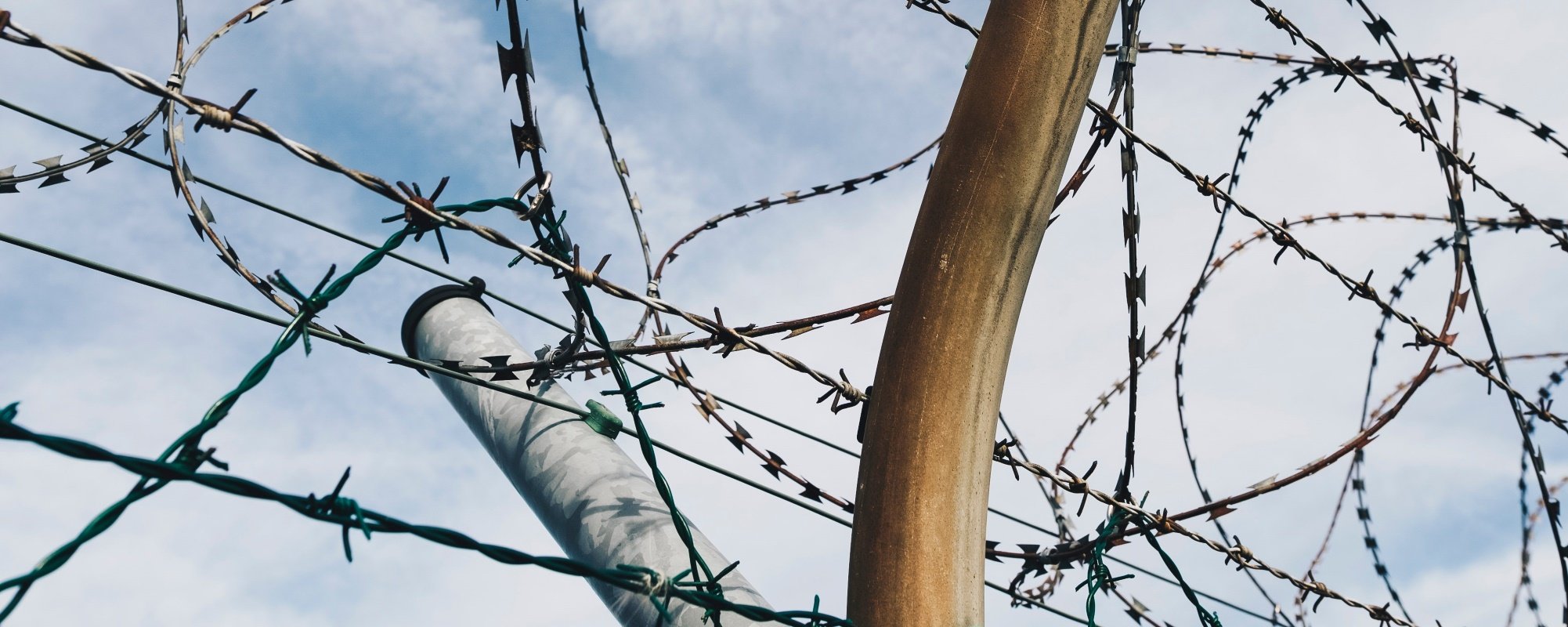After a violent internal conflict, or in the context of transitioning from an authoritarian regime to democracy, one of the main hurdles that victims of violence face in order to have access to justice is the existence of amnesty laws. These can be either ‘self-amnesty laws’, adopted by an incumbent regime in order to avoid facing legal consequences for its acts, or else amnesty laws adopted in the context of an agreement among the parties to an internal conflict. In both cases, these laws generally prevent the prosecution of perpetrators of human rights violations and the redress of victims. This goes in principle against the four main pillars of transitional justice, i.e. criminal prosecutions, reparations for victims, truth-seeking and guarantees of non-repetition.
There is however no clear regulation of amnesty laws in international law. What comes closer are probably the UN Principles to Combat Impunity, adopted in 2005. According to these Principles, “states shall (…) take appropriate measures in respect of the perpetrators, particularly in the area of criminal justice, by ensuring that those responsible for serious crimes under international law are prosecuted, tried and duly punished”. Principle 24 refers expressly to amnesty laws, mentioning that they are only lawful if perpetrators can be judged before benefitting from them and if they do not affect the victims’ right to reparation.
But before the adoption of these principles, international human rights bodies and courts had already dealt with the issue of amnesty laws. The first of them was the UN Human Rights Committee (HRCee), which mentioned already in 1992 with respect to torture that “[a]mnesties are generally incompatible with the duty of States to investigate such acts; to guarantee freedom from such acts within their jurisdiction; and to ensure that they do not occur in the future”.1 Thereafter, the most active court with respect to amnesty laws has been the Inter-American Court of Human Rights (IACtHR), issuing its first judgment concerning this issue in 2001, in the case of Barrios Altos vs. Peru. This case concerned two ‘self-amnesty’ laws, adopted in 1995 by the regime of Fujimori, which impeded to hold responsible anyone who had participated in human rights violations between 1980 and 1995. The facts of that case were related to the extrajudicial execution of fifteen people by members of the Peruvian army in 1991. When the amnesty laws entered into force, the investigation of these facts was closed by the Peruvian High Court of Justice. The IACtHR held in this context that “[s]elf-amnesty laws lead to the defenselessness of victims and perpetuate impunity; therefore, they are manifestly incompatible with the aims and spirit of the Convention”.2 This judgment allowed to reopen an important number of investigations which led to the prosecution and imprisonment of Fujimori himself, among others.
The aforementioned arguments were subsequently applied in further cases against Chile,3 Brasil,4 Uruguay5 and El Salvador.6 The IACtHR stated in this respect that the prohibition of amnesty laws not only applies to ‘self-amnesties’ but also to amnesty laws included in political agreements reached during a transition to democracy.7 However, in its last judgment concerning amnesty laws, the IACtHR left the door open for partial amnesties adopted in the context of negotiations aimed at ending a non-international armed conflict, highlighting on the other hand that such amnesties cannot be applied to war crimes or crimes against humanity.8 Access to justice for victims of human rights violations has played a very important role in these decisions of the IACtHR, as according to its case-law the prosecution and punishment of perpetrators forms part of the victims’ right to a remedy and reparation.
On the other hand, the European Court of Human Rights (ECtHR) has been less strict towards amnesty laws than its American counterpart. It has adopted a flexible approach, mentioning in this respect that “[t]he state is justified in adopting, in the context of its criminal policy, any amnesty laws it might consider necessary, with the provision, however, that a balance is maintained between the legitimate interests of the State and the interests of individual members of the public in having the right to life protected by law”.9 It has also specified certain circumstances under which an amnesty law might be lawfully adopted, such as “a reconciliation process and/or a form of compensation to the victims”.10 Nevertheless, in a number of cases against Turkey, the ECtHR found that the existence of amnesty provisions constituted a violation of the State’s obligation to investigate acts of torture, arguing that “when an agent of the State is accused of crimes that violate Article 3 of the Convention, (…) the granting of an amnesty or pardon should not be permissible”.11 However, in none of these cases did the ECtHR order a State to repeal an amnesty law.
This is different in the case of the African Court of Human and Peoples’ Rights (ACtHPR), which ordered for the first time the repeal of an amnesty law in 2020. Thereby the ACtHPR argued, similarly to the ECtHR, that an amnesty can be compatible with human rights law “if it is accompanied by restorative measures for the benefit of the victims”, but these measures were not present in the case at hand.12 However, contrary to the ECtHR, the ACtHPR did not consider that the existence of an amnesty law amounted to a violation of the obligation to prosecute acts of torture. Instead, the ACtHPR argued that this law constituted an infringement of the right to an effective remedy, thus giving more weight to the impediment for victims to have access to justice.
In sum, through the jurisprudence of the three regional human rights courts and the UN Human Rights Committee, one can observe the emergence of a customary international law norm prohibiting ‘blanket amnesty laws’, i.e. those that apply for every type of crime committed during a specific period. This has also been argued by international criminal courts, such as the Extraordinary Chambers in the Courts of Cambodia, which stated that “am emerging consensus prohibits amnesties in relation to serious international crimes”.13 This prohibition of ‘blanket amnesty laws’ is also implicit in a number of UN human rights treaties, which oblige states to prosecute acts of torture, genocide or enforced disappearance, among others.
On the other hand, human rights bodies have also become more lenient towards accepting partial or context-specific amnesty laws. This means that amnesty laws can be compatible with human rights law when they leave out of their scope human rights violations that include an obligation to prosecute, such as torture or enforced disappearance, as well as international crimes such as genocide or crimes against humanity. With respect to other ‘less serious’ human rights violations, it depends on the concrete circumstances of the case. Moreover, a very important aspect for the legitimacy of amnesty norms is whether they allow for the victims’ access to justice. This means that in addition to the prosecution of perpetrators, other forms of reparation should be afforded to victims, including measures of restitution, compensation, rehabilitation and satisfaction.14 If an amnesty law adopted in the context of a process of reconciliation after an internal conflict complies with these two aspects, it can be compatible with the right of access to justice and the international obligations of the state.
An example of such an amnesty law can be found in the peace process that has been going on in Colombia for the last years. This state adopted an amnesty law in the context of solving its long-lasting internal armed conflict, but this law clearly excludes amnesty or pardon for crimes against humanity and gross human rights violations. Besides it, in order to benefit from this amnesty, the perpetrators are required to confess their crimes and collaborate in the clarification of the facts, thereby contributing to the victims’ right to truth. During this peace process, Colombia did also adopt a “Victims’ Law”, creating a unit for the compensation and reparation of victims’ rights, as well as the restitution of their lands.
Thus, the Colombian example shows that amnesty laws and access to justice are not always two irreconcilable concepts. In order for them to be compatible, the law cannot be a ‘self-amnesty’, it needs to exclude certain crimes, and allow for the reparation of victims in accordance with the UN Basic Principles on the Right to a Remedy and Reparation.15 It is probably not an easy task to reconcile amnesties and access to justice, but in order to put an end to internal armed conflicts that cause profound divisions in a society it might be the best possible solution.
1 UN HRC, General Comment No. 20, Adopted at the Forty-fourth Session of the Human Rights Committee, 10 March 1992, para. 15.
2 IACtHR, Case of Barrios Altos vs. Peru, Merits, Judgment of March 14, 2001, Series C No. 75, para. 43.
3 IACtHR, Case of Almonacid Arellano et al. v. Chile, Preliminary Objections, Merits, Reparations and Costs, Judgment of September 26, 2006, Series C No. 154.
4 IACtHR, Case of Gomes Lund et al. (“Guerrilha do Araguaia”) vs. Brazil, Preliminary Objections, Merits, Reparations, and Costs, Judgment of November 24, 2010, Series C No. 219.
5 IACtHR, Case of Gelman v. Uruguay, Merits and Reparations, Judgment of February 24, 2011, Series C No. 221.
6 IACtHR, Case of the Massacres of El Mozote and surrounding areas vs. El Salvador, Merits, Reparations and Costs. Judgment of October 25, 2012, Series C No. 252.
7 IACtHR, Case of Gomes Lund et al. (“Guerrilha do Araguaia”) vs. Brazil, Preliminary Objections, Merits, Reparations, and Costs, Judgment of November 24, 2010, Series C No. 219, para. 175.
8 IACtHR, Case of the Massacres of El Mozote and surrounding areas vs. El Salvador, Merits, Reparations and Costs. Judgment of October 25, 2012, Series C No. 252, paras. 285-286.
9 ECtHR, Tarbuk vs. Croatia, para. 50
10 ECtHR, Case of Marguš v. Croatia (Grand Chamber), App. No. 4455/10, 27 May 2014, para. 139.
11 ECtHR, Case of Yerli vs. Turkey, App. No. 59177/10, 08 July 2014, para. 61. See also ECtHR, Case of Okkali vs. Turkey, App. No. 52067/99, 17 October 2006, para. 78; ECtHR, Case of Terzi and Erkmen vs. Turkey, App. No. 31300/05, 28 July 2007, para. 34.
12 ACtHPR, Case of Sébastien Germain Marie Aikoué Ajavon vs. Republic of Benin, Merits and Reparations, Application 062/2019, 04 December 2020, paras. 234-238.
13 ECCC, Case of Prosecutor vs. Noun Chea, Ieng Sary, Ieng Thirith, and Khieu Samphan, Preliminary Objections, 03 November 2011, para. 53.
14 See in this respect UN Basic Principles and Guidelines on the Right to a Remedy and Reparation for Victims of Gross Violations of International Human Rights Law and Serious Violations of International Humanitarian Law, Adopted and proclaimed by General Assembly resolution 60/147 of 16 December 2005, para. 18.
15 These principles mention in paragraph 12 that “[o]bligations arising under international law to secure the right to access justice and fair and impartial proceedings shall be reflected in domestic laws”.
Except where otherwise noted, the content on this site is licensed under a Creative Commons Attribution-NonCommercial-ShareAlike 4.0 International License.



